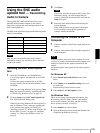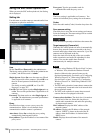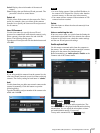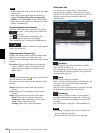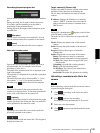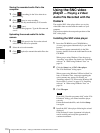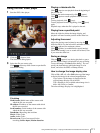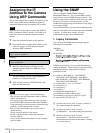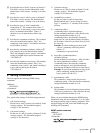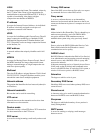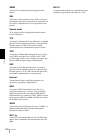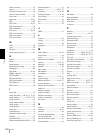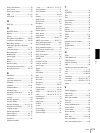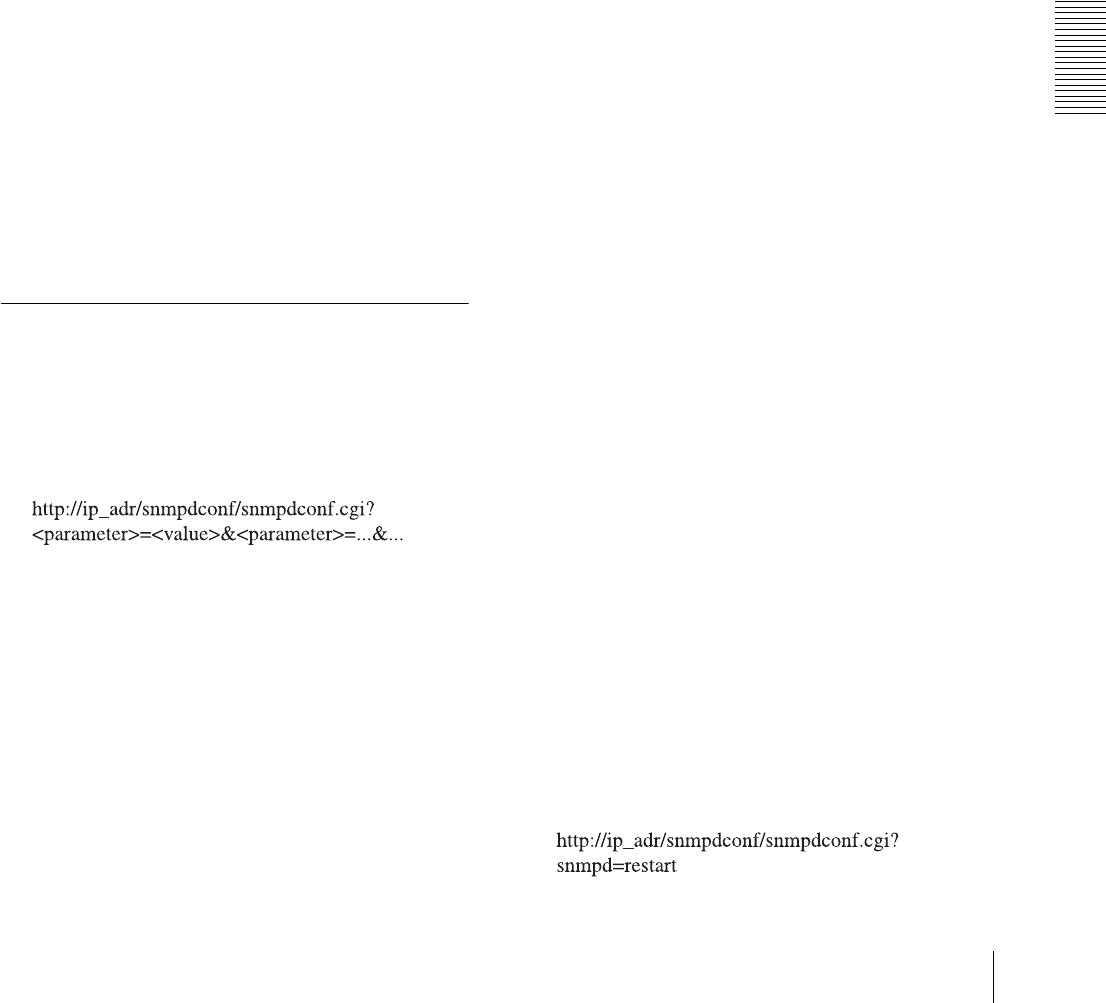
Others
Using the SNMP
113
4 describes the case of “mib-2.system. sysContact.0”.
This field is used to describe information on the
administrator of this camera. Nothing is set at the
factory.
5 describes the case of “mib-2.system. sysName.0”.
This field is used to describe the administration
node of this camera. Nothing is set at the factory.
6 describes the case of “mib-2.snmpEnable
AuthenTraps.0”. This example shows when “1”
(enable) is set. In this setting, a trap occurs when
there is an authentication failure. When “2”
(disable) is set, no authentication failure trap
occurs.
7 describes the community attributes. This example
shows the identification number “ID=1,” the
community name “public,” and enables read from
any IP address (0.0.0.0).
8 describes the community attributes, similar to 7.
This example shows the identification number
ID=2, the community name “private,” and enables
reading by SNMP request packet from the host
“192.168.0.101”.
9 describes the attributes to send a trap. This example
shows the identification number “ID=1,” the
community name “public,” and enables sending of
traps to the host having the IP address
“192.168.0.101”.
2. Setting Commands
The unit supports the following SNMP setting
commands.
<Method>
GET, POST
<Command>
First, perform the settings of the following parameters.
1) sysLocation=<string>
Set the case of “mib-2.system.sysLocation.0” in the
<string> position. The maximum length of
<string> is 255 characters.
2) sysContact=<string>
Set the case of “mib-2.system.sysContact.0” in the
<string> position. The maximum length of
<string> is 255 characters.
3) sysName=<string>
Set the case of “mib-2.system.sysName.0” in the
<string> position. The maximum length of
<string> is 255 characters.
4) enaAuthTraps=<value>
Set the case value of “mib-2.snmp.snmp
EnableAuthenTraps.0” in the <string> position.
Type “1” (enable) or “2” (disable) in the <value>
position.
5) community=<ID>,r,
<communityName>,<IpAddressString>
Set the community attributes. <ID> describes the
setting identification number (1 to 8)
<communityName> describes the community
name to be set, and <IpAddressString> describes
the IP address of the host you allow access (0.0.0.0
for any host).
Example: To allow reading by any host in the
“private” community and having the ID
number “2”.
community=2,r,private,0.0.0.0
6) trap=<ID>,<communityName>,
<IpAddressString>
Set the attributes to send traps to. <ID> describes
the setting identification number (1 to 8),
<communityName> describes the community
name to send traps to, and <IpAddressString>
describes the IP address of the host to send traps to.
Example: To specify the destination of traps as the
public community and the ID number “1”.
trap=1,public,192.168.0.101
7) delcommunity=<ID>
This parameter is used to delete the previous
community setting. <ID> describes the community
setting identification number (1 to 8).
8) deltrap=<ID>
This parameter is used to delete the previous setting
of the host to send traps to. <ID> describes the trap
setting identification number (1 to 8).
When you have finished changing the SNMP setting
information using the above parameters 1) to 8), check
the changed settings using an inquiry command. If the
changed settings are OK, restart the SNMP using the
following CGI command.
SNMP restart command
<Method>
GET, POST
<Command>



